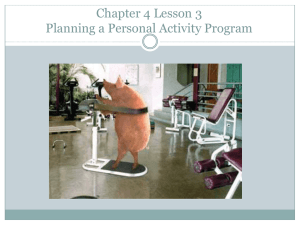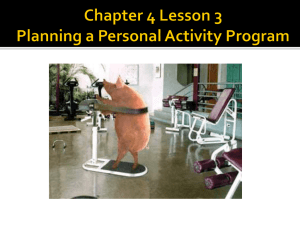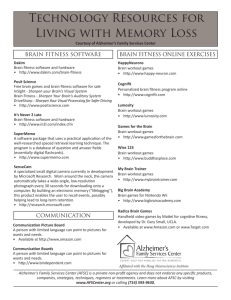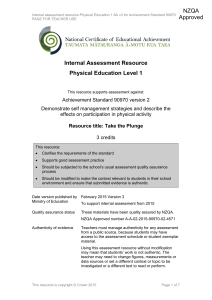MAkE A sPlAsh WITh WATER FITNEss
advertisement
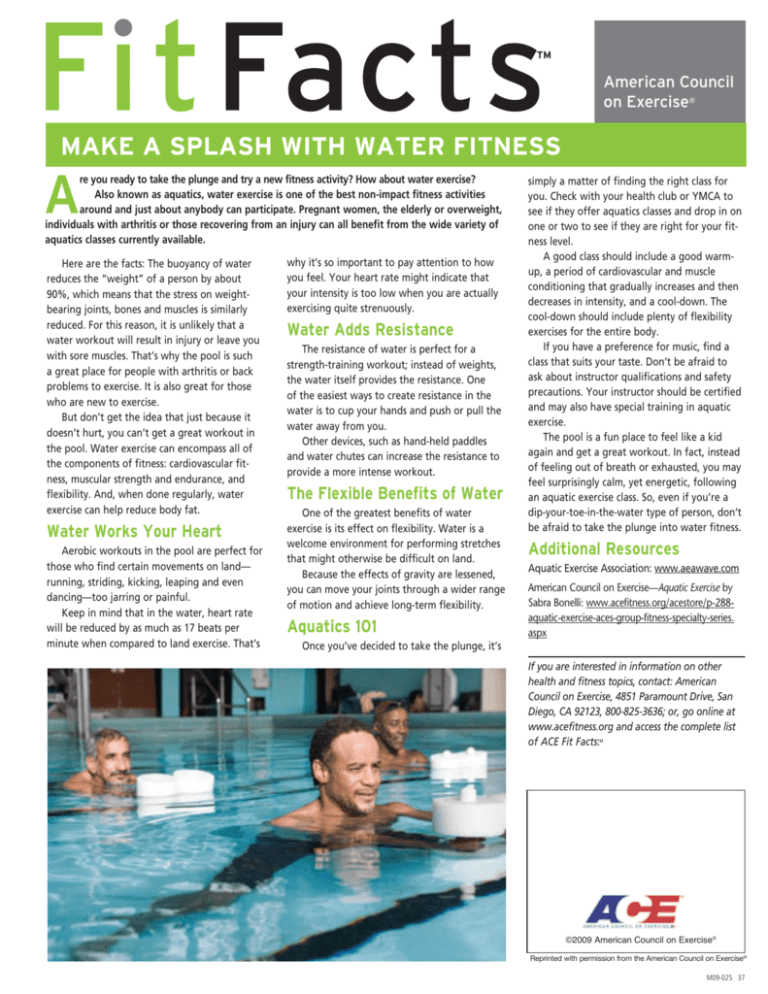
TM American Council on Exercise® Make a Splash With Water Fitness A re you ready to take the plunge and try a new fitness activity? How about water exercise? Also known as aquatics, water exercise is one of the best non-impact fitness activities around and just about anybody can participate. Pregnant women, the elderly or overweight, individuals with arthritis or those recovering from an injury can all benefit from the wide variety of aquatics classes currently available. Here are the facts: The buoyancy of water reduces the “weight” of a person by about 90%, which means that the stress on weightbearing joints, bones and muscles is similarly reduced. For this reason, it is unlikely that a water workout will result in injury or leave you with sore muscles. That’s why the pool is such a great place for people with arthritis or back problems to exercise. It is also great for those who are new to exercise. But don’t get the idea that just because it doesn’t hurt, you can’t get a great workout in the pool. Water exercise can encompass all of the components of fitness: cardiovascular fitness, muscular strength and endurance, and flexibility. And, when done regularly, water exercise can help reduce body fat. Water Works Your Heart Aerobic workouts in the pool are perfect for those who find certain movements on land— running, striding, kicking, leaping and even dancing—too jarring or painful. Keep in mind that in the water, heart rate will be reduced by as much as 17 beats per minute when compared to land exercise. That’s why it’s so important to pay attention to how you feel. Your heart rate might indicate that your intensity is too low when you are actually exercising quite strenuously. Water Adds Resistance The resistance of water is perfect for a strength-training workout; instead of weights, the water itself provides the resistance. One of the easiest ways to create resistance in the water is to cup your hands and push or pull the water away from you. Other devices, such as hand-held paddles and water chutes can increase the resistance to provide a more intense workout. The Flexible Benefits of Water One of the greatest benefits of water exercise is its effect on flexibility. Water is a welcome environment for performing stretches that might otherwise be difficult on land. Because the effects of gravity are lessened, you can move your joints through a wider range of motion and achieve long-term flexibility. Aquatics 101 Once you’ve decided to take the plunge, it’s simply a matter of finding the right class for you. Check with your health club or YMCA to see if they offer aquatics classes and drop in on one or two to see if they are right for your fitness level. A good class should include a good warmup, a period of cardiovascular and muscle conditioning that gradually increases and then decreases in intensity, and a cool-down. The cool-down should include plenty of flexibility exercises for the entire body. If you have a preference for music, find a class that suits your taste. Don’t be afraid to ask about instructor qualifications and safety precautions. Your instructor should be certified and may also have special training in aquatic exercise. The pool is a fun place to feel like a kid again and get a great workout. In fact, instead of feeling out of breath or exhausted, you may feel surprisingly calm, yet energetic, following an aquatic exercise class. So, even if you’re a dip-your-toe-in-the-water type of person, don’t be afraid to take the plunge into water fitness. Additional Resources Aquatic Exercise Association: www.aeawave.com American Council on Exercise—Aquatic Exercise by Sabra Bonelli: www.acefitness.org/acestore/p-288aquatic-exercise-aces-group-fitness-specialty-series. aspx If you are interested in information on other health and fitness topics, contact: American Council on Exercise, 4851 Paramount Drive, San Diego, CA 92123, 800-825-3636; or, go online at www.acefitness.org and access the complete list of ACE Fit Facts. TM ©2009 American Council on Exercise® Reprinted with permission from the American Council on Exercise® M09-025 37



